Post Twelve - Irkutsk
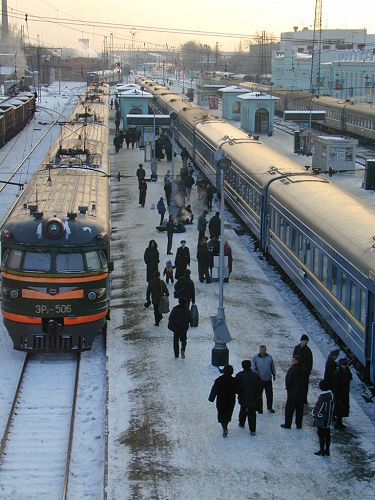 Trans-Siberian Railway Trans-Siberian RailwayAt eleven PM I boarded my train from Moscow to Irkutsk. This trip would take three and a half days and cross five time zones. Russia is so big that even at this point I would only be half way across the country. Although long, the journey was quite pleasant. The cabins are cozy and comfortable. There are samovars at the end of each car that provide endless hot water for tea, instant soup, and noodle cups. I spent my days reading, sipping tea, and watching the countryside go by. We passed several small towns and a few sprawling cities that seemed like little islands of life in the vastness of frozen Siberia. |
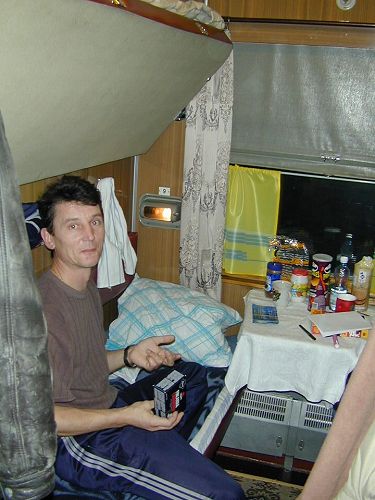 Nicholai NicholaiNicholai was my compartment mate for almost the entire journey. The compartments have four beds and when we left Moscow, all were occupied. Luckily, the other two people exited the train only one day into the trip and we had the compartment to ourselves. Nicholai spoke very little English, and I spoke no Russian, but with plenty of time on our hands, we exhausted my phrase book asking each other every question we could find. I learned he was an electrical engineer from a small town near Irkutsk. He was married with two children. Many of the questions he asked me concerned how much things cost in the U.S. He would look up words like 'car', 'house', and 'milk' and say 'how much in America?' I would write down a number and then he would smile and write down the cost in rubbles. Once he asked what an electrical engineer's salary in the U.S. would be. Not knowing, but approximating, I wrote down $50,000. He gave me a grim smile and wrote down that he earned the equivalent of $3,000 per year. |
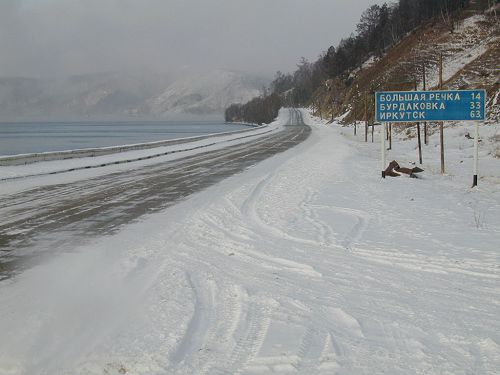 Lake Baikal Lake BaikalThe driver who picked me up at the Irkutsk train station immediately drove me out to Lake Baikal. In the freezing weather I expected the lake to be covered with ice and was rather surprised to see the steaming surface was still liquid. Andre explained to me that it had been a warm summer and that it would take until January for the lake to freeze. But when it did freeze, the ice would be crystal clear. Supposedly, even with two meters of ice you can easily spot fish swimming underneath. I was sorry I missed that sight but as cold as it was in November, I couldn't imagine being there in January. |
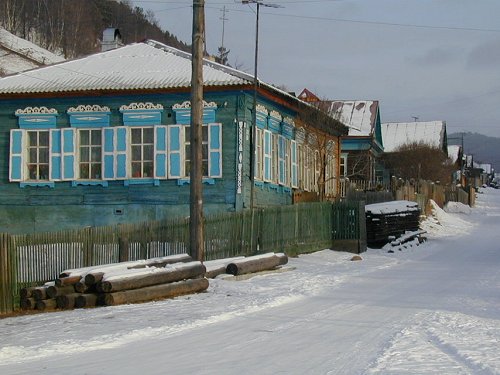 Listvyanka ListvyankaListvyanka is a small community right on the edge of the lake. Most of the inhabitants make their money during the summer in fishing or tourism. Winter is a time for mending equipment, and finding solace in the banyas (wood fired saunas). The wooden houses appeared to be poorly insulated for the weather and the single pane windows were coated with a thick layer of crystalline frost. Fortunately, central heating provides most of the homes with endless heat and hot water. I have no idea how the first settlers were able to live here without it. |
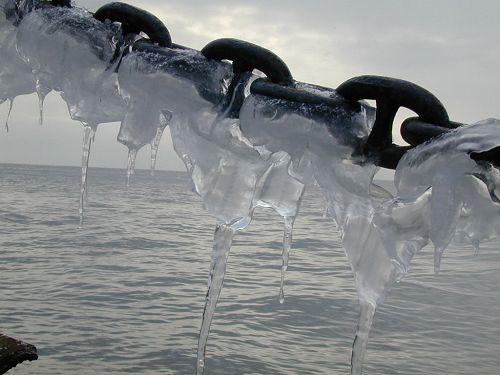 The Lake The LakeLake Baikal is the largest freshwater lake in Eurasia and at 1637 m (5371 ft), the deepest lake in the world. They estimate it contains one-fifth of the earth's fresh surface water. My hosts assured me the water was so clean you could drink it right out of the lake, though they admitted that might not be a good idea right next to town. |
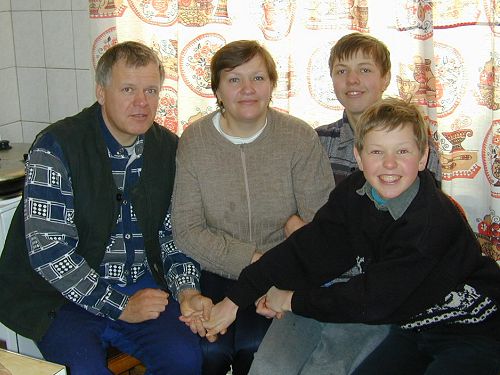 Baikal Home-stay Baikal Home-stayWhile at Lake Baikal I stayed with a family living at the limnological institute. The father was a scientist working there and he told me about the geologic history of the lake and some of its unique life forms. He and his youngest son also introduced me to the experience of the Russian banya. Like the Finish sauna, they use wood fired stoves to produce great heat. When you think you can't stand any more, you take birch branches (with the dried leaves still attached) and you flail yourself until you sting all over. Then you step outside the sauna, perhaps enjoy a beer or a glass of water, and return for another sweat. At the end you feel invigorated, yet relaxed. A limnologist's salary is pretty meager so they grow much of their own food. The mother stuffed me with fresh salads made from beets and cabbage, boiled potatoes with horseradish sauce, and main courses of dumplings, lake fish, or meatballs. Nearly everything was from their garden or from the local market. |
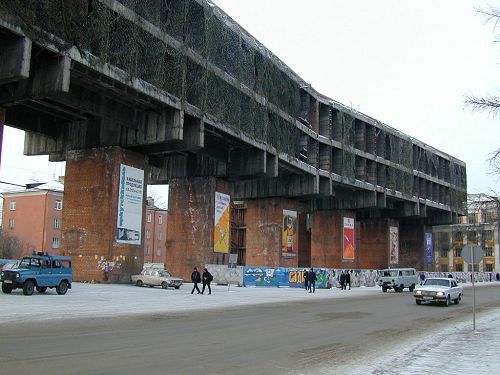 Soviet Architecture Soviet ArchitectureSoviet architecture has its own, unmistakable style. I have no idea what the original use of this building on the main square in Irkutsk was. Today it is draped with camo nets (?) and serves as classrooms for the nearby university. Its so ugly it's beautiful. |
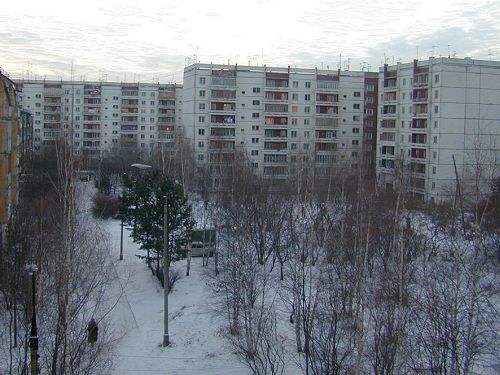 Apartment Blocks Apartment BlocksApartment blocks are a common feature around most Russian cities. In the soviet era, the government provided housing for all, so housing was mass-produced. Nearly all the apartments are the same on the inside. The front door opens into a wide hall with all the rest of the rooms leading off from it. There are three or four good-sized bedrooms, a kitchen, a toilet, and a bath. In the soviet era, these apartments were shared by multiple families - one family to a room. The kitchen and bathrooms were communal. Now there is generally one family to an apartment and the extra bedrooms can be used as living rooms. |
Next Up: Mongolia
Copyright 2002
Scott & Karen Semyan